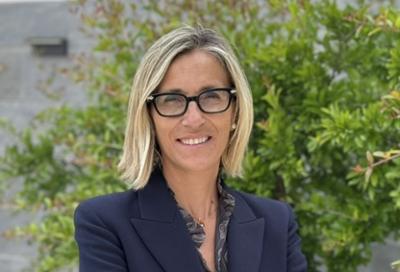

María del Mar Serna (ASHRAE): C&R 2025 is going to be one of the most interesting editions, with conferences of a high technical level
The president of the ASHRAE Spain Chapter and partner of ACIX Consultoria believes that C&R "acts as a point of innovation, training and connection between professionals, manufacturers, technicians and institutional managers with a focus on decarbonisation and the improvement of air quality in our buildings.
"We think it is going to be one of the most interesting editions, with conferences of a high technical level".
How is the decarbonisation of the building stock in Spain evolving?
It is making progress, but still faces significant challenges. Approximately 58% of existing buildings were built before the first energy efficiency standards came into force, and 80% are energy labelled E, F or G. The Next Generation Funded Recovery Plan has boosted the pace of energy renovation, but we still need to increase the current rate by a factor of five to meet the targets. The European EPBD directive, recently updated on 30 June, calls for long-term strategies to achieve a zero-emission building stock, which sets a clear roadmap.
ASHRAE holds that its main challenge is to accelerate the rehabilitation of the existing fleet, overcoming bureaucratic, technical and cultural barriers. Key to this is aligning with international best practice as promoted by ASHRAE and moving towards carbon neutrality by 2050.
What role does the air conditioning and refrigeration sector in Spain have?
Air conditioning and refrigeration (HVAC-R) systems are essential in the decarbonisation of buildings, as they account for a significant percentage of energy consumption. In addition, these systems generate direct emissions from leakage of refrigerant gases with high global warming potential (GWP).
The transition to more efficient equipment, such as A+++ class, with inverter technology or heat recovery, together with the integration of intelligent control systems (BEMS, sensors, programmable thermostats), allows for significant reductions in energy consumption and emissions. It is also essential to optimise mechanical ventilation systems with heat recovery (VMC-RC), thereby improving efficiency and comfort.
How can these systems contribute to improving energy efficiency, indoor air quality and sustainability?
Well-designed and managed HVAC-R systems can simultaneously improve energy efficiency, indoor air quality (IAQ) and the overall sustainability of buildings.
In order to achieve this, first of all, it is necessary from ASHRAE's point of view to use high-efficiency equipment, such as air-to-water or air-to-air heat pumps with high coefficients of performance (COP, EER). Secondly, to implement intelligent control and automation, with presence sensors, CO₂ and energy management systems that adjust air conditioning according to actual demand. It is important to consider each situation on a case-by-case basis. And thirdly, to apply predictive maintenance and continuous monitoring, making it possible to detect faults, optimise consumption and extend the useful life of the equipment.
In terms of indoor air quality, it is essential to ensure adequate ventilation, with outdoor air supply adjusted to occupancy and in line with regulations such as UNE-EN 16798 or ASHRAE standards 62.1 and 62.2. And incorporate good filtration, humidity control and thermal comfort conditions.
What issues would you highlight in relation to professionals in the sector?
One aspect to be highlighted is the need to improve the continuous technical training of professionals in the sector. The move towards nearly zero-energy and zero-emission buildings requires qualified profiles in design, installation, maintenance and energy management of HVAC-R systems.
The ASHRAE Spain Chapter promotes the transfer of technical knowledge, cooperation with universities and continuous professional development. Sustainability depends not only on technology, but also on the human capital that implements it with rigour and vision.
In your opinion, how does the C&R fair contribute to promoting sustainability and energy efficiency in the air conditioning and refrigeration sector and in buildings as a whole?
The C&R fair is a key event for the sector. It acts as a point of innovation, training and connection between professionals, manufacturers, technicians and institutional decision-makers. Through the fair, we learn first-hand about the latest technological solutions in energy efficiency, renewable energies applied to air conditioning, low GWP refrigerants, digitisation of systems and automation. This year especially has a focus on decarbonisation and improving the air quality of our buildings. We believe it will be one of the most interesting editions, with conferences of a high technical level.





